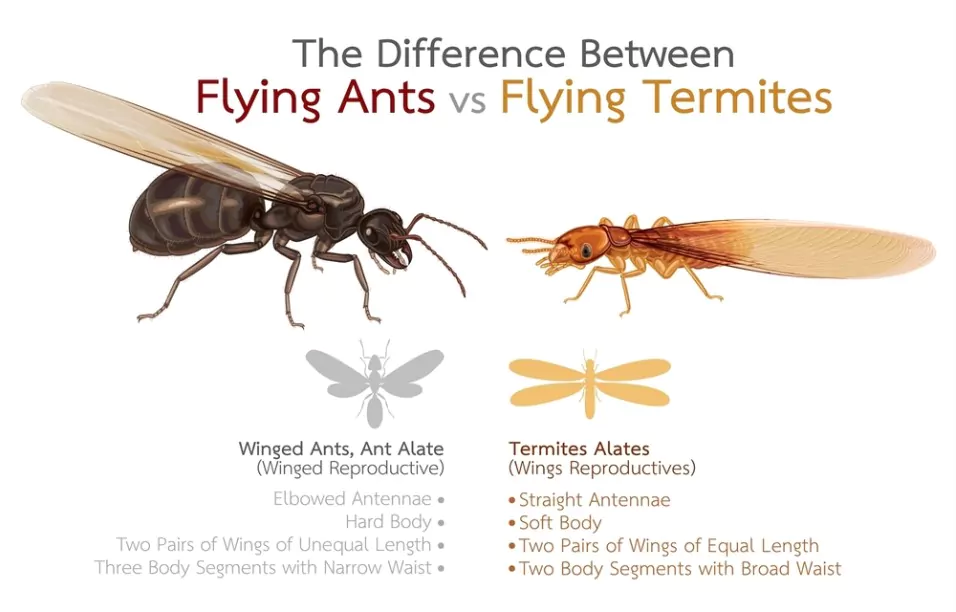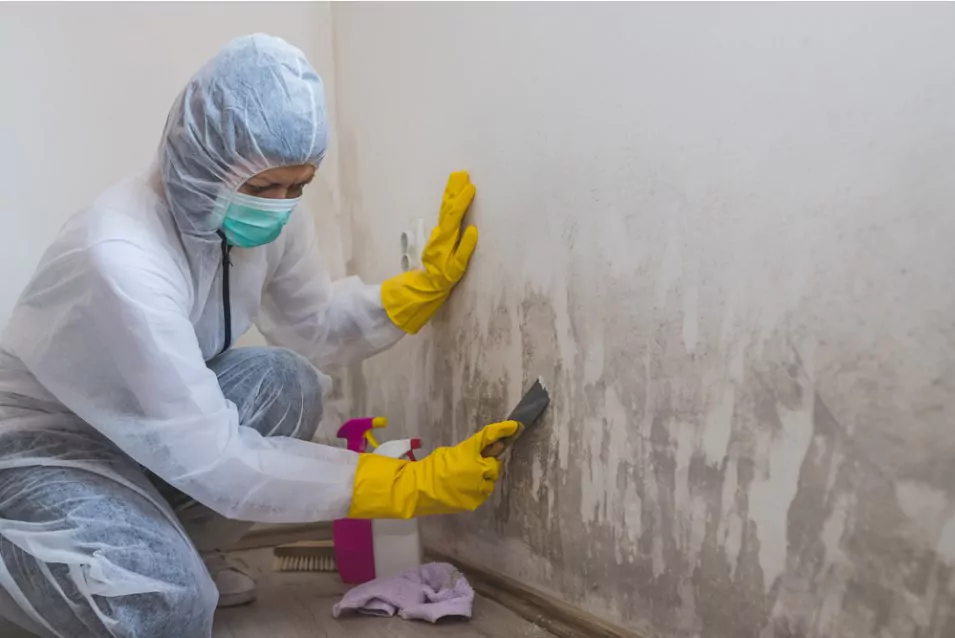How to Get Rid of Flying Termites Quickly and Effectively?

Termites are one of the most destructive pests known to mankind. These tiny insects can cause significant damage to your home and property if left unchecked. One of the most common types of termites is flying termites, also known as swarmers. These are the termites that leave their colonies to start new ones, and they can be a sign of a larger termite infestation. In this blog post, we will discuss how to identify flying termites and the steps you can take to get rid of them.
1 Identifying Flying Termites

Flying termites are often confused with flying ants, but there are some key differences. Here are some of the characteristics of flying termites that can help you identify them:
- Size: Flying termites are usually smaller than flying ants, typically measuring between ¼ to ½ inch long.
- Colour: Flying termites are usually pale or translucent, while flying ants are usually black, brown, or red.
- Wings: Flying termites have two pairs of wings that are equal in length and are about the same size as their bodies. Flying ants have two pairs of wings, but the front wings are longer than the hind wings.
- Antennae: Flying termites have straight, bead-like antennae while flying ants have bent antennae.
If you see flying insects in or around your home, it’s important to determine whether they are flying termites or flying ants. If they are flying termites, it’s likely that there is a termite colony nearby, and you should take action to get rid of them as soon as possible.
2 Steps to get rid of Flying Termites
Identify the source of the infestation
The first step to getting rid of flying termites is to locate the source of the infestation. Flying termites are usually a sign that there is a termite colony nearby, and the swarmers are leaving to start new colonies. Look for signs of termite activity, such as mud tubes, termite droppings, or damaged wood. Once you have identified the source of the infestation, you can take steps to get rid of the termites.
Use insecticides
One of the most effective ways to get rid of flying termites is to use insecticides. There are many different types of insecticides available, including sprays, baits, and dust. It’s important to choose an insecticide that is specifically designed to get rid of termites, as other insecticides may not be effective. Follow the instructions on the label carefully, and be sure to wear protective clothing and equipment.
Use termite traps

Another effective way to get rid of flying termites is to use termite traps. These are bait stations that are placed around your home, and they contain a slow-acting insecticide that the termites will carry back to their colony. The termites will eat the bait and then die, which will eventually get rid of the entire colony. Termite traps are a good option if you want to avoid using chemicals inside your home.
Call a professional exterminator

If you have a large termite infestation or if you are not comfortable using insecticides or traps, it’s best to call a professional exterminator. A professional can assess the extent of the infestation and recommend the best course of action. They may use a combination of methods, including insecticides, traps, and fumigation, to get rid of the termites and prevent future infestations.
Seal Entry Points
Once you’ve located the nest, the next step is to seal any entry points that the termites are using to access your home. This may include cracks in the foundation, gaps around windows and doors, and other openings in your home’s exterior. By sealing these entry points, you can prevent new termites from entering your home and nesting.
Use Boric Acid

Boric acid is a natural pesticide that can be effective in getting rid of flying termites. You can sprinkle the boric acid powder around your home’s foundation and other areas where termites are likely to be present. The termites will ingest the boric acid and die shortly after. It’s important to note that boric acid can be toxic to humans and pets, so be sure to follow the manufacturer’s instructions carefully and keep it out of reach of children and animals.
Remove Moisture

Termites thrive in moist environments, so it’s important to eliminate any sources of excess moisture in and around your home. This may include fixing leaky pipes, repairing damaged gutters, and ensuring that your home’s drainage system is working properly. By removing sources of moisture, you’ll make your home less hospitable to termites and other pests.
Preventing Termite Infestations
Once you got rid of the flying termites, it’s important to take steps to prevent future infestations. Here are some tips to help prevent termites from entering your home:
Keep wood away from your home: Termites are attracted to wood, so it’s important to keep any wood products or debris away from your home. This includes firewood, lumber, and mulch.
Fix any leaks: Termites are also attracted to moisture, so it’s important to fix any leaks in your home’s plumbing or roof. Also, make sure your gutters are clean and free of debris so water can flow freely away from your home.
Seal cracks and openings: Termites can enter your home through small cracks and openings. Make sure to seal any openings around windows, doors, and pipes with caulk or another type of sealant.
Get regular inspections: It’s important to have regular termite inspections to catch any potential infestations early. A professional exterminator can inspect your home and identify any signs of termite activity.
Use treated wood: If you are building a new home or doing any renovations, use treated wood that is resistant to termites. This can help prevent future infestations.
3 Wrapping Up
Flying termites can be a sign of a larger termite infestation, and it’s important to take action to get rid of them as soon as possible. There are several steps you can take to get rid of flying termites, including using insecticides, traps, or calling a professional exterminator. Once the termites are gone, it’s important to take steps to prevent future infestations by keeping wood and moisture away from your home, sealing any cracks and openings, and getting regular inspections. By taking these steps, you can protect your home and property from the damage caused by termites.
Also, make sure to invest in a vacuum cleaner to clean the termites. Happy cleaning!
Community Q&A
About This Article
This article has been viewed 527 times.



